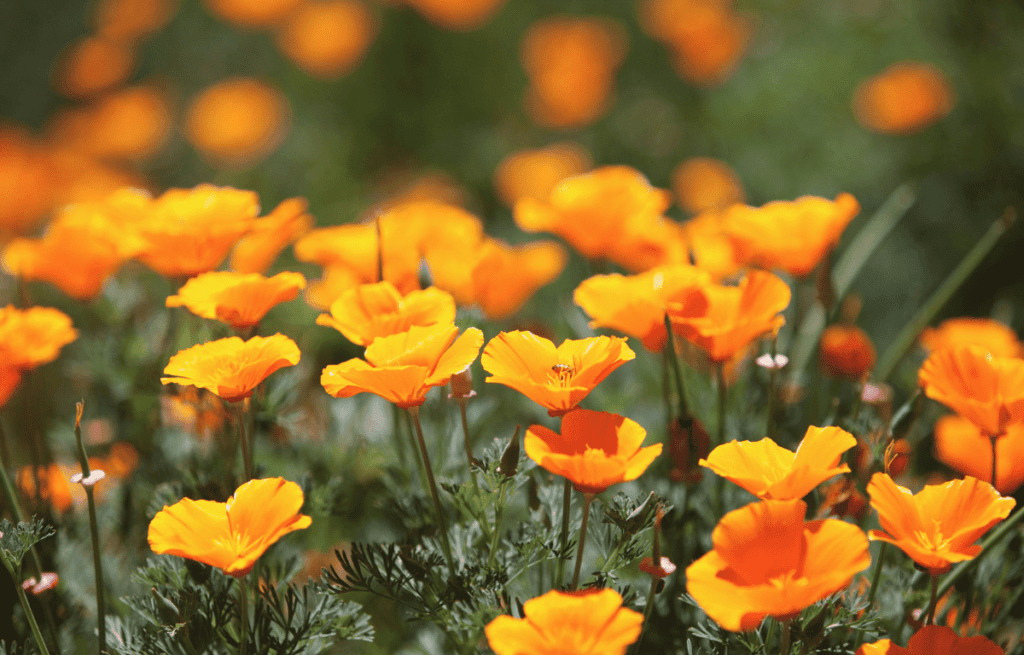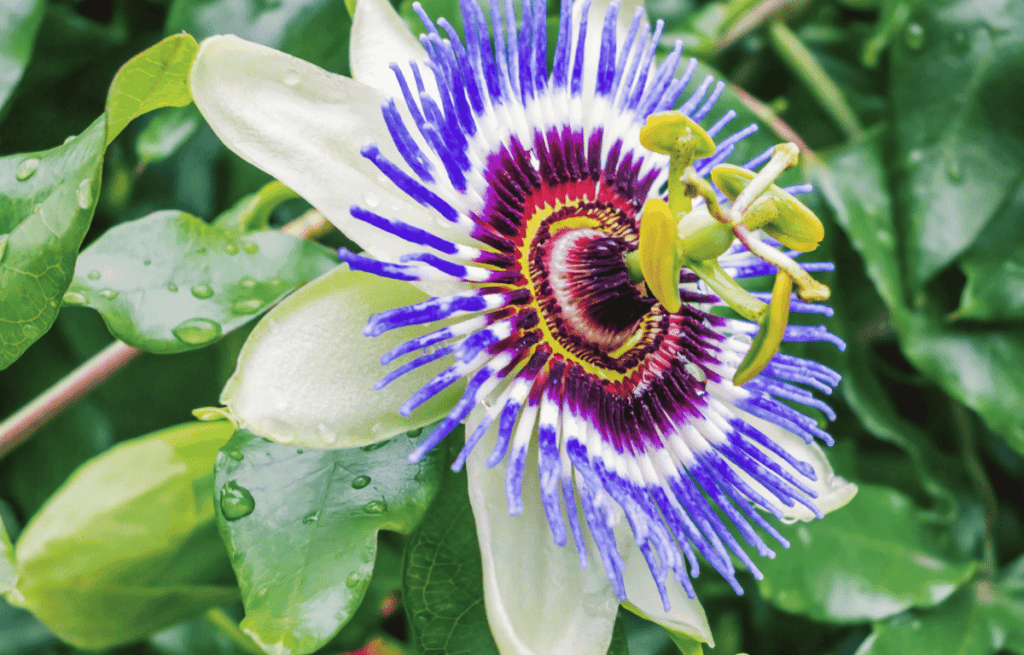Analgesics Explained
[1, 2, 6]
Analgesic is an herbal action term used to describe the medicinal effect a plant has on our bodies. These herbs reduce pain either internally or externally. Some analgesic herbs have a specific area of the body where they are most effective, whereas others have a more generalized effect. For example, spilanthes can be used for pain relief in the mouth but is not as effective elsewhere.
Many analgesic herbs are also nervines (support the nervous system). They can affect the nervous system directly, as with California poppy and passionflower. Others, like meadowsweet and black cohosh, relieve pain through their antispasmodic (eases cramps and spasms) or anti-inflammatory (reduces inflammation) actions.

Characteristics
[1, 2, 5, 6]
Definition: Analgesics reduce pain internally or externally by directly affecting the nervous system or through secondary actions like reducing inflammation or easing muscle spasms [1].
Indications for use: Headaches, migraines, muscle pain, arthritic conditions, inflammation, nerve damage, joint pain, menstrual cramps
5 Common Analgesics
1. Cayenne
Capsicum annuum, Capsicum frutescens
[3]
- Energetics: Warming and drying
- Parts Used: Fruits and seeds
- Preparations: Infusion, tincture, liniment, salve, culinary
- Actions: Antimicrobial, analgesic, carminative, stimulating diaphoretic, stimulating expectorant, immuno-stimulant, rubefacient, metabolic stimulant
Cayenne pepper or chili pepper is a hot and spicy herb and is part of the nightshade family (Solanaceae). Its stimulating actions are helpful for pushing through extreme fatigue, sluggish digestion, and poor nutrient absorption. Cayenne contains the constituent capsaicin that helps to block pain receptors. It is helpful for several types of pain, including arthritic conditions, nerve damage, migraines, and shingles.
Make infused oil with cayenne by using 1/2 cup olive oil and 2 tablespoons of cayenne powder. Use a double boiler and heat the mixture for 2 hours at 100 degrees F. Strain and use alone or turn it into a salve with beeswax. For external use only and keep away from eyes and mucous membranes. Use extreme caution when handling.

2. Meadowsweet
Filipendula ulmaria
[1, 5]
- Energetics: Slightly cooling, drying
- Parts Used: Leaves and flowers
- Preparations: Infusion, tincture, infused honey
- Actions: Astringent, anti-inflammatory, antiemetic, analgesic, antibacterial, diuretic
Meadowsweet is native to Europe and Asia and is part of the rose family (Rosaceae). It contains the constituent salicin used in the synthesis of Aspirin. We use meadowsweet for pain relief in arthritic conditions and head/neck pain caused by inflammation.
Make a meadowsweet infusion using 1 -2 tsp. dried leaves and flowers with 8 oz. boiling water. Let steep for at least 10 minutes, strain and serve. The infusion may be taken up to 3 times per day.

3. Willow
Salix spp.
[4, 5, 6]
- Energetics: Cooling and slightly drying
- Parts Used: Bark, leaves, catkins
- Preparations: Infusion, decoction, powder, tincture
- Actions: Analgesic, anti-inflammatory, astringent, febrifuge
Willow is native to Europe and Asia and is part of the willow family (Salicaceae). There are several species in the Salix genus, and many are used for medicine, including S.alba, S. nigra, and S. purpurea. Aspirin, the pharmaceutical drug, is synthesized from a constituent in willow called salicin. However, willow contains many other constituents that aid in pain relief as well, so it is not entirely accurate to call it a weaker form of aspirin. Willow can help with many types of pain, like headaches, back aches, and joint pain.
Make a willow decoction using 1/4 cup dried bark and twigs with 8 oz. water. Let simmer for at least 20 minutes. Strain and serve.

4. California Poppy
Eschscholzia californica
[1, 2, 5, 8]
- Energetics: Cooling and drying
- Parts Used: Aerial parts in flower, sometimes roots
- Preparations: Tincture, infusion, honey
- Actions: Nervine, sedative, antispasmodic, analgesic, anxiolytic, antidepressant
California poppy is native to the western United States and is part of the poppy family (Papaveraceae). There are several species in the Eschscholzia genus, and the two we use most often as medicine are E. californica and E. mexicana. California poppy acts as an analgesic in high doses and anxiolytic in low doses [8]. It is considered generally safe for children and elders.
Make a fresh California poppy tincture using (1:2 95%). Take 1–2 mL up to three times a day. For higher doses, take up to 5 mL acutely.

5. Passionflower
Passiflora incarnata
[1, 2, 5, 7]
- Energetics: Fairly neutral, cooling, relaxing
- Parts Used: Leaf and flower
- Preparations: Infusion, tincture, poultice, and compress
- Actions: Analgesic, hypnotic, nervine, antidepressant, anxiolytic, and antispasmodic
Passiflora incarnata is a flowering vine native to the Americas and is part of the Passifloraceae family [7]. Passionflower is used to help relieve general tension, ease anxiety and promote restful sleep. It is also analgesic used to help relieve menstrual cramps, headaches, and muscle pain [1, 2, 5].
Make a passionflower infusion using 1-2 tsp. dried leaves and flowers with 8 oz. boiling water. Let steep for at least 10 minutes, strain and serve. The infusion may be taken up to 3 times per day.

Disclaimer: Many anaglesic herbs are generally safe, although there are circumstances when you should not take a particular herb. I am providing a brief and general overview of common anaglesic herbs for educational purposes only.
Join Our Newsletter
Sign up for our monthly newsletter to get easy gardening tips, seasonal to-dos, and herbal recipes delivered right to your inbox.
Thank you!
Check your email to confirm your subscription.
References
1. Blankespoor J. The Healing Garden. Mariner Books; 2022.
2. Chevallier A. Encyclopedia of Herbal Medicine. Third. Penguin Random House; 2016.
3. De La Foret R. Alchemy of Herbs. Hay House Inc.; 2017.
4. De La Foret R, Han E. Wild Remedies. Hay House Inc.; 2020.
5. Easley T, Horne S. The Modern Herbal Dispensatory: A Medicicne-Making Guide. North Atlantic Books; 2016.
6. Hoffmann, FNIMH, AHG D. Medical Herbalism – The Science and Practice of Herbal Medicine. The Healing Arts Press; 2003.
7. NCCIH. Passionflower. NCCIH. Published August 2020. https://www.nccih.nih.gov/health/passionflower
8. Rolland A, Fleurentin J, Lanhers MC, et al. Behavioural Effects of the American Traditional Plant Eschscholzia californica: Sedative and Anxiolytic Properties. Planta Med. 1991;57(3):212-216. doi:10.1055/s-2006-960076












